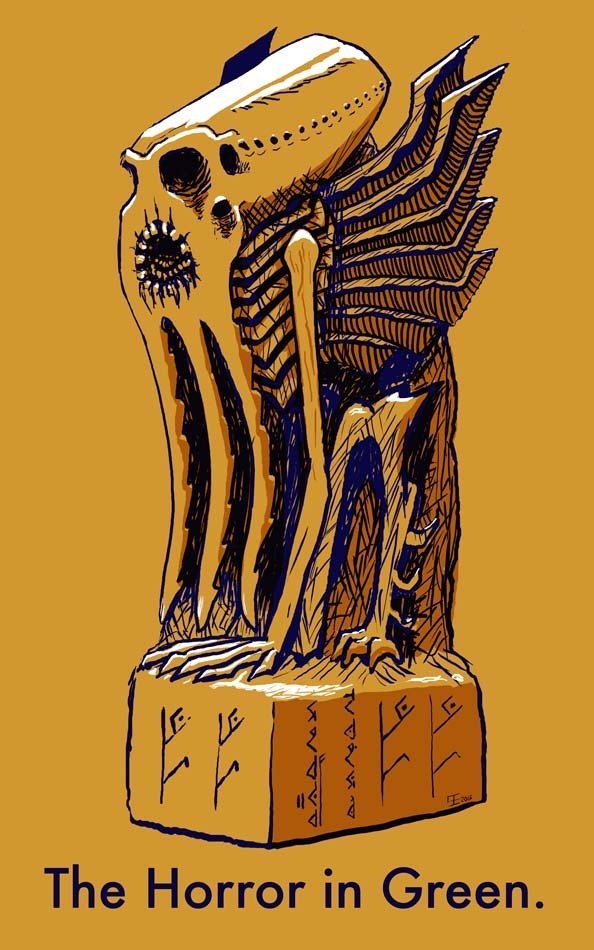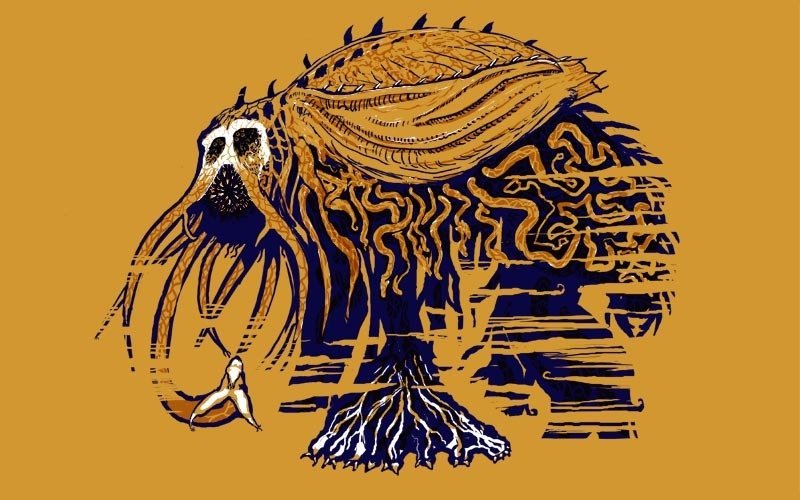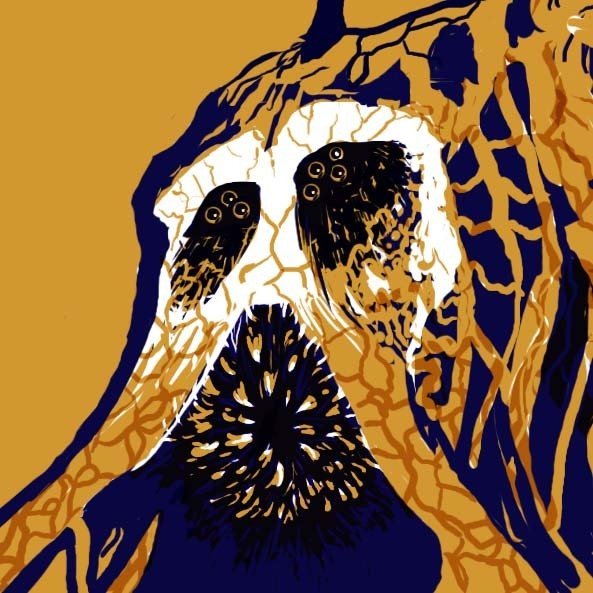
Iä! Iä! Cthulhu fhtagn!
In July 19, 2013, I wrote:
Hey, Matt Wedel over at Echo Station 5-7 put up my write-up of the Cthulhus I’ve been doing lately. Check it out! There’s some great images being accumulated in the Collect Call of Cthulhu series!
I think I need to do more of this stuff.
And did I? Not really. Not yet. But I do aim to change that.
Was I inspired? Clearly, I can be inspired. Here's what I wrote to accompany these pieces:
I’ve tried to draw H.P. Lovecraft’s Cthulhu a lot, but never really produced anything I would consider even remotely successful. I sort of came by the stories themselves in a confused manner, too, which didn’t help at all. My first exposure was probably through a collection of other short stories in one of the libraries I grew up in while I was a Navy brat (we moved every 18 months; so it’s hard to remember which library, honestly). It wasn’t even a dedicated Lovecraft collection, but an anthology filled with stories by other authors. Which? I can’t say, or even when, though I’m thinking it was when I lived in Japan, maybe in 1984. But my interest received a boost via roleplaying games, especially the Cthulhu mythos section (filled with marvelous Erol Otus art) of the original printing of Deities and Demigods by TSR, which was posted behind the librarian’s desk (with all the other AD&D books) at the Yokota library.
I used to troll used and new bookstores looking for his work, finding very little (this was before popularity seems to have kicked off, but living on base in remote locations didn’t really help, either). For whatever reason, collections were rare as they tantalizing, and these influences may have starved and malformed my ideas on the subject.
Until Matt posted about what he’d like to see in a Cthulhu Idol. Everyone knows what this thing looks like, especially if they’ve read the story. But it isn’t much help if you like a lot of good direction, since the description in the story is vague enough to allow for an infinite multitude of possibilities.
Here’s one such, informed somewhat by Matt’s take.
I’ve always loved simple illistrations made with limited color palettes, so I began there, as though this were one of the storybooks about dinosaurs or cryptozoology I grew up on.
A mountain walked or stumbled: as a warm-up, I started with Cthulhu itself, drawn with as few preconceived notions as possible. Alien, monstrous, but resembling no earthly creature beyond superficial impressions. The fog helps make it appear even larger, by disrupting its silhouette. The eyes are numerous, but proportionally small, to support the sense of scale. The tentacles are numerous, writhing, and appear mighty (to me).
And the mouth… an empty hole rimmed with many teeth. No beak, no lips, no mandibles, but thousands upon thousands of teeth. Anyone or anything that passes into it is lost forever. The wings, still folded or matted against the body, would soon inflate and exaggerate its proportions even further.
Consider this an objective view of the Landlord of R’lyeh, one no sane human eyes should witness. But what about the idols, the handmade representations of the monster?
The Idol: it is different. Subjectivity obliges some variation, but their roots lie in the story itself.
Cthulhu influences dreams, and as shapes appear in the minds of telepathic sensitives, the minds of sculptors and gravers might assert their own interpretations, possibly driven by their own motives and dark needs.
Representing Cthulhu as a god of death, gaunt and skeletal, seems to fit. The eyes are larger here, to facilitate recognition and identification. A lack of eyes on the idol might increase its abstraction, but you might not feel as though it could be looking at you. The maw, fairly true to inspiration, magnifies its strangeness and menace.
Cthulhu might be well unknowable in appearance to anyone unfortunate enough to witness it in person, but animals more terrestrial and familiar may influence the sculptor’s taste. Distortions in proportion complete the effect.
The idol stands on a block, carved all of the same green material. On the block are the infamous undecipherable characters, depicting who knows what horrors.
A lot of people who draw this seem to make stuff up and fill the space. Here I could not resist referring to a conlang project of mine which uses multiple sets of glyphs for the same sounds. Even without deciphering it, anyone can guess what’s written on the block.
I chose a specific approach to the design of the idol and Cthulhu itself, for the idea that details can be used to enhance the alienness of a subject, similar to the way a masking effect can be had with simplification (cf. Understanding Comics by Scott McCloud for some great discussion of this effect).


